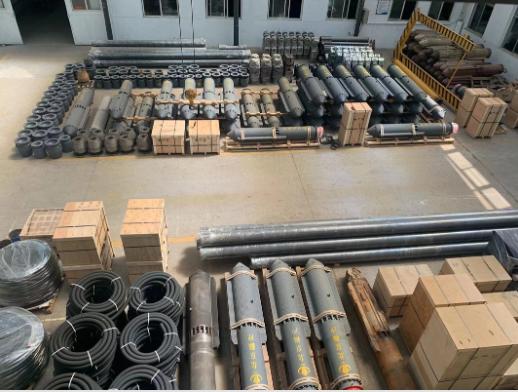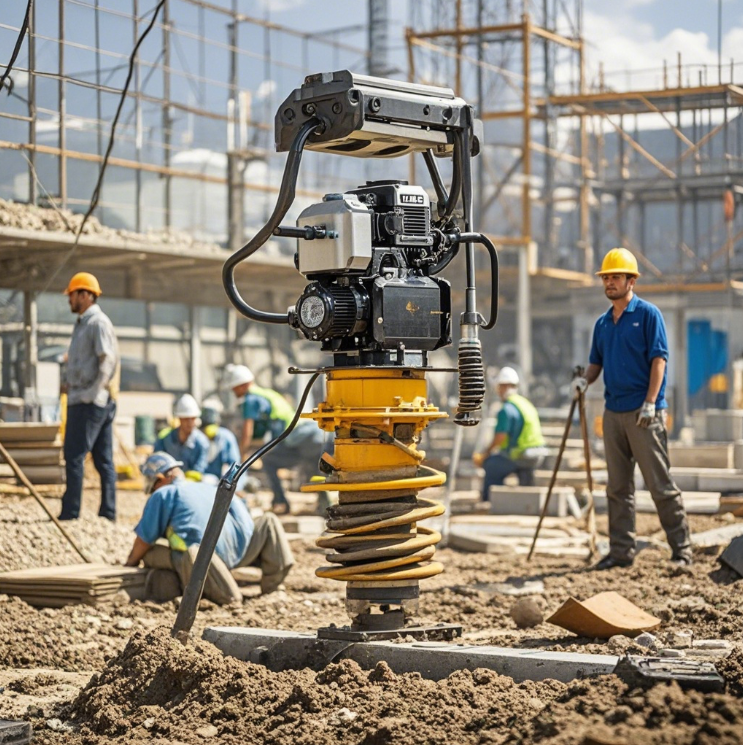Views: 0 Author: Site Editor Publish Time: 2024-12-25 Origin: Site








Vibratory impactors are essential tools for soil compaction in a variety of construction and engineering projects. These machines generate powerful vibrations that penetrate the ground, reducing voids and increasing the density of the soil. However, to optimize their performance and ensure consistent results, a vibratory impactor frequency conversion control cabinet is used. This advanced control system allows operators to precisely adjust the frequency and amplitude of the machine’s vibrations, tailoring them to the specific requirements of each project.
In this article, we will delve into the components and functions of a vibratory impactor frequency conversion control cabinet, exploring how it enhances the efficiency and effectiveness of vibratory impactors in the field.

A vibratory impactor is a type of construction equipment used to compact soil, gravel, and other materials. It works by generating high-frequency vibrations that penetrate the ground, reducing air voids and increasing the density of the material being compacted. Vibratory impactors are commonly used in road construction, foundation work, and other projects that require strong and stable soil.
The main components of a vibratory impactor include the exciter, which generates the vibrations; the eccentric weights, which create the centrifugal force; and the housing, which contains the exciter and other mechanical parts. The vibrations produced by the exciter are transmitted through the eccentric weights, causing the impactor to vibrate and compact the material beneath it.
A vibratory impactor frequency conversion control cabinet is an advanced control system that allows operators to adjust the frequency and amplitude of the vibrations produced by the impactor. This system typically consists of a frequency converter, control panel, and various sensors and monitoring devices.
The frequency converter is the heart of the control cabinet. It converts the incoming power supply into a variable frequency and voltage, which can be adjusted to suit the specific requirements of the project. By changing the frequency and voltage, operators can control the speed and force of the vibrations, optimizing the compaction process for different types of soil and materials.
The control panel provides a user-friendly interface for operators to monitor and adjust the settings of the vibratory impactor. It displays real-time data such as the current frequency, voltage, and vibration amplitude, allowing operators to make informed decisions and fine-tune the machine’s performance.
In addition to the frequency converter and control panel, the control cabinet may also include various sensors and monitoring devices. These can include accelerometers, which measure the intensity of the vibrations; pressure sensors, which monitor the hydraulic system; and temperature sensors, which help prevent overheating. By continuously monitoring these parameters, the control cabinet can automatically adjust the impactor’s settings to ensure optimal performance and prevent damage.

The operation of a vibratory impactor frequency conversion control cabinet can be broken down into several key steps:
Once the desired frequency and amplitude settings have been determined, the operator inputs them into the control panel. This can be done using preset programs or by manually adjusting the sliders and knobs on the panel.
After the settings have been inputted, the control cabinet sends a signal to the frequency converter to start the vibratory impactor. The frequency converter converts the incoming power supply into a variable frequency and voltage, which is then sent to the exciter.
As the exciter generates vibrations, the sensors continuously monitor the key parameters of the vibratory impactor. These sensors send real-time data to the control panel, where it is displayed for the operator to see.
If the actual parameters deviate from the desired settings, the control cabinet automatically adjusts the frequency and voltage to bring them back in line. This ensures consistent and efficient compaction throughout the entire project.
Once the compaction process is complete, the operator can stop the vibratory impactor using the control panel. The control cabinet will then safely shut down the machine and store the last settings for future use.
Using a vibratory impactor frequency conversion control cabinet offers several benefits for construction and engineering projects:
By allowing operators to precisely adjust the frequency and amplitude of the vibrations, the control cabinet enables them to optimize the compaction process for different types of soil and materials. This results in stronger and more stable foundations, leading to longer-lasting and safer structures.
By continuously monitoring the key parameters of the vibratory impactor, the control cabinet can automatically adjust the machine’s settings to ensure optimal performance. This not only improves the quality of the compaction but also helps prevent damage to the machine, reducing maintenance costs and extending its lifespan.
By providing real-time data on the machine’s performance, the control cabinet allows operators to make informed decisions and fine-tune the compaction process as needed. This leads to more efficient and effective use of the vibratory impactor, saving time and resources.
By storing the last settings for future use, the control cabinet eliminates the need for manual recalibration between projects. This not only saves time and effort but also ensures consistent results, regardless of the operator or project.
A vibratory impactor frequency conversion control cabinet is an essential component of any modern vibratory impactor system. By providing precise control over the frequency and amplitude of the vibrations, it enables operators to optimize the compaction process for different types of soil and materials, leading to stronger and more stable foundations. The real-time monitoring and automatic adjustment capabilities of the control cabinet further enhance the efficiency and effectiveness of the vibratory impactor, making it a valuable tool for construction and engineering projects of all sizes.